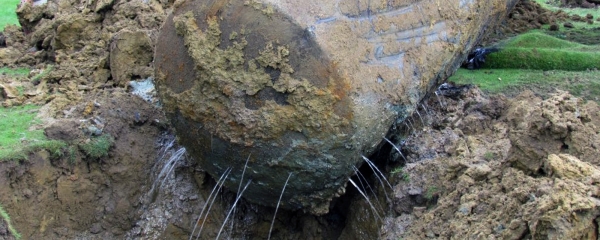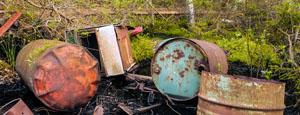It is estimated that about 12% of Quebec households use fuel oil as a source of energy for heating. Fuel oil is sometimes stored in tanks which age and can pose a risk to the environment. In Quebec, the average age of operating tanks would be 28 years. Do you heat your home with oil? Keep an eye on your tank.
Watch Out for Spills
Almost 40% of fuel oil spills come from indoor or outdoor residential tanks. Leaking fuel oil can constitute a serious fire hazard and cause significant damage to the environment. A leaking reservoir can pollute groundwater, affect a well, or contaminate the nearby drinking water system. If the floor is impregnated with fuel oil, cleaning it up is often a difficult and very expensive task.
Insurers
In the event of a spill, does your insurance cover the damage? According to the Insurance Bureau of Canada (IBC), damage caused by an oil tank installed outside the home is not covered by most insurance policies. In addition, some insurers refuse to insure fuel oil tanks 20 years or older.
To be covered, you must add the Home Oil Spill or Leak rider to your home insurance policy.
Generally, it covers:
- damage directly caused to insured property;
- the cost of cleaning and decontaminating the floor (usually up to $150,000);
- the replacement of certain installation;
- liability (up to $150,000 typically).
This coverage applies in the event of an accidental overflow or fuel oil leak from a fixed tank, appliance or supply line connected to a commonly used heating system.
These must be permanently installed inside the residential building or its insured outbuildings, such as a garage connected to the house.
Installations, tanks, supply lines or devices causing the loss are usually not covered by this endorsement. Additionally, if the damage occurs while the building is under construction or vacant, coverage will not apply.
Contact your insurer to fully understand the extent of your protection.
Prevention above all
Prevention remains the best way to avoid unfortunate accidents.
The following few observations will help identify impending problems with your fuel oil tank.
- A tank over 25 years old should generally be changed.
- Since the beginning of the 1980s, the date of manufacture has been inscribed on the tanks;
- The absence of a date is an indication of his advanced age;
- A tank installed outdoors presents a greater risk of leaks since it is exposed to the elements and undergoes the rigorous cycles of freezing and thawing;
- The presence of wet areas or seepage at the base of the reservoir is a sign of possible problems;
- If there is a lingering smell of fuel oil from the tank, a leak is likely on the horizon;
- Signs of corrosion do not bode well;
- A tank left empty in the summer is prone to moisture and corrosion problems.
It should be noted that the recent pressures exerted on the oil heating industry have caused an oil company member of the Quebec Oil Heating Association to stop delivering fuel oil to a customer whose tank presents risks.
Replace a tank
The consumer who wants to change his old residential tank for a new one has two solutions. He can opt for a steel tank whose feed outlet is placed under it. Its price, including installation, is approximately $1,700.
The second choice is the ultimate in tanks. Its seamless galvanized steel exterior cladding is lined with an interior wall of corrosion-resistant high-density polyethylene. It is also equipped with a leak detector. Its vertical shape allows a remarkable space saving. It costs around $2000 including installation.
Some of these tanks now come with better warranties of up to 10 years, but what matters most is making sure they are installed properly. The connections between the tank and the boiler must not be buried in the concrete floor or underground and must be covered with a protective sheath. It is also necessary to ensure the presence on the tank of its date of manufacture, as well as its compliance with standards.
Canadian standards, in particular the CAN/ULC-S602-M standard. Homeowners who want to take extra precautions can install a retention pan, which costs around $250 plus installation.
By checking your oil tank regularly or replacing your old tank over 25 years old, you can avoid costly troubles for your home and the environment in general.The removal operation includes:
- Emptying of residual petroleum products.
- Cleaning the tank.
- Transporting the tank to an appropriate location
- Characterization of the walls and the bottom of the excavation.
- The restoration of the site to the prevailing state before the reservoir removal operation.
Oil heating often equals decontamination ( ICI Radio Canada )


